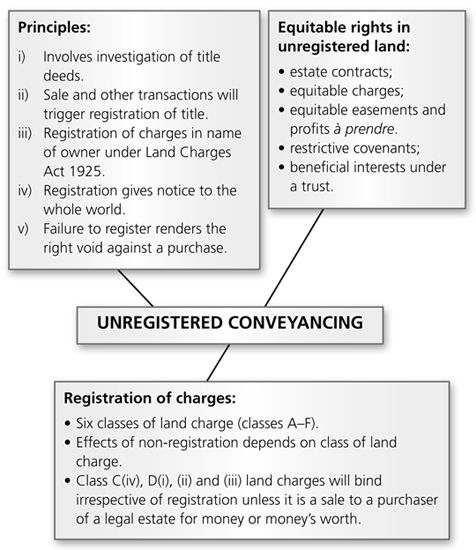The 1925 legislation and the transfer of rights in unregistered land
The 1925 Legislation and the Transfer of Rights in Unregistered Land

3.1 Reasons for the 1925 Legislation
1. The 1925 legislation introduced many long overdue reforms to land law.
2. The main aims were to:
 simplify conveyancing;
simplify conveyancing;
 reduce the number of legal estates in land to two;
reduce the number of legal estates in land to two;
 provide a system to secure rights for those people owning equitable rights;
provide a system to secure rights for those people owning equitable rights;
 extend the system of registration of land charges in unregistered land;
extend the system of registration of land charges in unregistered land;
 extend the system of registration of title;
extend the system of registration of title;
 abolish outdated rules and practices.
abolish outdated rules and practices.
3.2 Principles of Unregistered Conveyancing
1. Although most titles of property in England and Wales are registered, there remain significant numbers of unregistered titles.
2. The purchase of land with an unregistered title involves investigation of the title deeds on each transaction.
3. Today, sale of an unregistered property takes place under the old rules, but first registration at the Land Registry must follow because sale is a trigger for first registration of title.
4. Unregistered titles are subject to the Land Charges Act 1972 (formerly the LCA 1925).
5. Rights affecting unregistered land must be registered as land charges at the Land Charges Registry.
6. Registration of charges are made under the name of the owner of the property rather than the name or number of the property (s3 LCA 1972, Oak Co-operative Building Society v Blackburn (1968).
7.